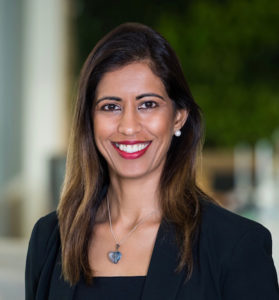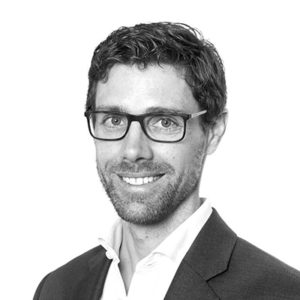How will the narrative surrounding renewable energy in the Middle East affect stakeholders within the HVACR industry, given that air conditioning is responsible for a significant portion of a building’s energy consumption?

Vivek Chaturvedi, Regional Business Director – IMEA, DSM
The Middle East region is at an inflection point when it comes to renewable energy, says Vivek Chaturvedi, Regional Business Director – IMEA, DSM, stressing that it is only natural that solar power is poised to play an extremely important role in the region. Gurmeet Kaur, Partner, Pinsent Masons, and board member, Middle East Solar Industry Association (MESIA), shares a similarly positive outlook. “There is an upward trajectory in solar and renewable because of the downward movement of pricing,” she says, adding that solar PV is now the cheapest form of energy in this part of the world.

Gurmeet Kaur, Partner, Pinsent Masons
For Kaur, the momentum can be attributed to the clear and decisive targets set by governments in the region, pointing to Saudi Arabia’s most recent announcement to have 60 GW from renewable energy by 2030 as a prime example. Francisco Ramalheira, Director – Business Development and Marketing, Enova, adds that in the United Arab Emirates, adoption of PVs has also been easy, due to incentives from the public sector. In addition to government initiatives stimulating the market, Kaur says, the introduction of technology and new CSP projects contribute to efforts towards achieving globally low pricing, making renewable energy a real alternative to conventional power sources.

Francisco Ramalheira, Director – Business Development and Marketing, Enova,
Ramalheira says that the sustainability agenda has driven large-scale utility projects related to renewable energy. Tim Armsby, Partner, Pinsent Masons, adds that while initially the public sector moved towards renewable energy owing to environmental reasons, now, there is a strong economic drive, particularly in solar, as it is achieving cheaper tariffs than those produced from conventional power, even in subsidised markets. “Why would you build a nuclear power plant when you can achieve a lower cost of electricity with solar?” he asks. “UAE is now looking for a 44% renewable energy mix. Other countries that haven’t yet started programmes are now doing so, such as Kuwait, Bahrain and Oman. The only thing is that most are massive projects. A lot can also be done in smaller-scale distributed energy, closer to the source and supply.”
Kaur is in agreement, adding that uptake is slower when it comes to rooftop solar installations, where power is generated and consumed at source. “Up until a few years ago,” Kaur says, “you didn’t have rooftop solar projects, because you couldn’t generate and consume power – only the authority could. It was necessary to introduce legislation to allow that, which has happened. We have seen it pick up in the commercial and industrial segments. In Dubai, for example, there are about 50 MW of installed rooftop projects. Two years ago, there were only 17 MW – it’s more than doubled. It is definitely moving forward, but it has been a lot slower than the acceleration we have seen in utility-scale projects.” Kaur adds that the uptake has been slow, due to relatively low prices of electricity and that reducing subsidies and educating stakeholders on the benefits of rooftop solar could help enhance its penetration. In small projects, Kaur says, financing is also an issue, as banks are not often involved in projects of this scale. She adds that currently, there are also challenges in the regulatory framework, in terms of what kind of protection a tenant, property owner or investor has in this segment.

Tim Armsby, Partner, Pinsent Masons
Armsby says more can also be done to relax the regulatory framework and allow third-party experts to come in and provide the whole package for land and building owners, advocating for a model that will allow building owners to go to a specialised company and say, “You do it for me; I don’t want to know about it and I’ll just pay a monthly amount.”
Strong enough to meet high demand?
While rooftop solar as a source of energy is an attractive option, many stakeholders believe that the roofs will not have enough space for the amount of solar PVs required to meet the massive energy requirement of air conditioning equipment in the region’s high-ambient conditions. Chaturvedi highlights the importance of area availability, stressing that given the high density of development in the region, every movement in efficiency on the demand side of cooling and refrigeration gets offset by the quantity of its requirements.
To address this issue, Chaturvedi says the industry as a whole, and DSM as a company, is doing its best to improve the efficiency of panels. “We are in the business of improving the efficiency of existing and future solar energy to the extent that the same sun and same square metre, delivers more power and, while doing so, brings the cost of solar energy down.” Currently, he says, only 18% of sun’s rays falling on solar panels get converted to electricity and that the industry is committed towards improving these figures.
Kaur adds that energy efficiency must also be viewed more holistically. “One of the reasons why buildings are not so efficient is because they oversize the AC,” she says. “You can look at reducing demand, that’s where you should start, because then, naturally your requirements for power will also come down. Once you have a more comprehensive energy-efficiency policy, then I think solar and other energy policies can go hand in hand.”
Kaur also presents solar wheeling projects as a possible solution for generating the required electricity of cooling equipment. “If there was ability to build solar plants at one location and wheel the energy across to be used in another location, then that would be a useful solution,” she says. “But that’s still not an option here in the United Arab Emirates. It’s an option in places like Jordan, because the regulation permits that.”
Kaur says this solution has gained popularity in Jordan, owing to the high tariffs imposed on commercial buildings.

Jeremy Crane, CEO and Co-Founder, Yellow Door Energy
Jeremy Crane, CEO and Co-Founder, Yellow Door Energy, echoes this, adding that there is a huge demand for lower-cost energy solutions in Jordan, due to high electricity prices and grid constraints and that the country’s solar wheeling regulation has allowed the company’s customers to benefit from the power generated by their solar parks. Speaking on recent projects, Crane says the company recently commissioned a 4 MW solar park outside of Amman to provide energy for Specialty Hospital and Istiklal Mall. Crane adds that currently, there isn’t any other country where solar leasing is economically viable but that the situation can easily change.
Chaturvedi also points to the development of floating solar power plants, as a possible solution, adding that DSM is developing materials that will make installing solar plants on large bodies of water affordable and viable.
The issue of intermittency
A conversation about renewable energy, however, will not be complete without discussing the issue of intermittency. For Chaturvedi, intermittency will be solved by affordable storage, stressing that the solar sector will be the biggest beneficiary of the technology development spearheaded by the automobile industry, when it comes to storage. “It is a matter of ‘when’ storage will be affordable, not ‘if’,” he says. “Once storage solves the problem of intermittency for good, that’s when solar will be mainstream because you can consume as you need, and not when it’s available.” Chaturvedi says the price range of storage today is where solar panels were 7-8 years ago, adding that “storage will not take 7-8 years to reach affordability to solve intermittency”.
Kaur says the biggest export potential is around storage, adding that while there are improvements to be made, the pricing for storage is already coming down. “We are starting to see CSP projects and what it allows you to do is store energy,” she says. “In Dubai, pricing has come down, and it has made governments consider and look at solar as an alternative to dispatchable and conventional power.”
Armsby provides another recommendation to address the issue of intermittency, which he says, could also bring renewable energy to countries that have massive requirement, such as Iraq. “Iraq clearly has desperate need for new power capacity,” he says, “but the security situation has not enabled the roll-out of projects in the way you might hope. Interestingly, Saudi Arabia is considering exporting power from solar, and Iraq has been mentioned as potential user of that power.” As such, Armsby paints a picture of an expanded interconnected grid in the Middle East, so excess power can be exported and countries can also take advantage of different peaks and demand, driven by particular localities and move power around the grid to where it’s needed.
In discussing the possibility of a regional energy corridor, Ramalheira draws a comparison to the energy corridor in Europe, where the entire grid is connected because of the cycles of production. “Wind, for example, doesn’t blow in the same velocity and with the same intensity throughout Europe,” he says. “It might blow well in Norway but not in Portugal, while the sun can be the other way around. It makes sense that grids are connected to ensure there are fluxes of energy being pushed to where it is needed. If I take that as an example and knowing that it is working and there is a wide network that is constantly being enlarged and enhanced – I think it would make all the sense to be happening here.” Ramalheira says that there are already some examples of connectivity between the grids in the Middle East and that “it’s only a question of a wider collaboration”. He says, “This would require the stakeholders to meet, agree and discuss their own strategies and ensure everyone understands each other.”
At the moment, Armsby says, the GCC region grid only has a capacity for moving about two gigawatts around the system, which is a relatively small amount of energy. “They would need to strengthen that capability and expand into Egypt and Iraq, where there is more of a need to make it work,” he says. Chaturvedi says that the success of such an endeavour will depend upon the politics involved, but that with regard to the technology aspect of such a model, all things being equal, he sees “interdependence of countries for generation in a country-combined grid to be the way forward”.
Hannah Jo Uy is Assistant Editor at Climate Control Middle East magazine. She may be contacted at hannah@cpi-industry.com
Copyright © 2006-2025 - CPI Industry. All rights reserved.